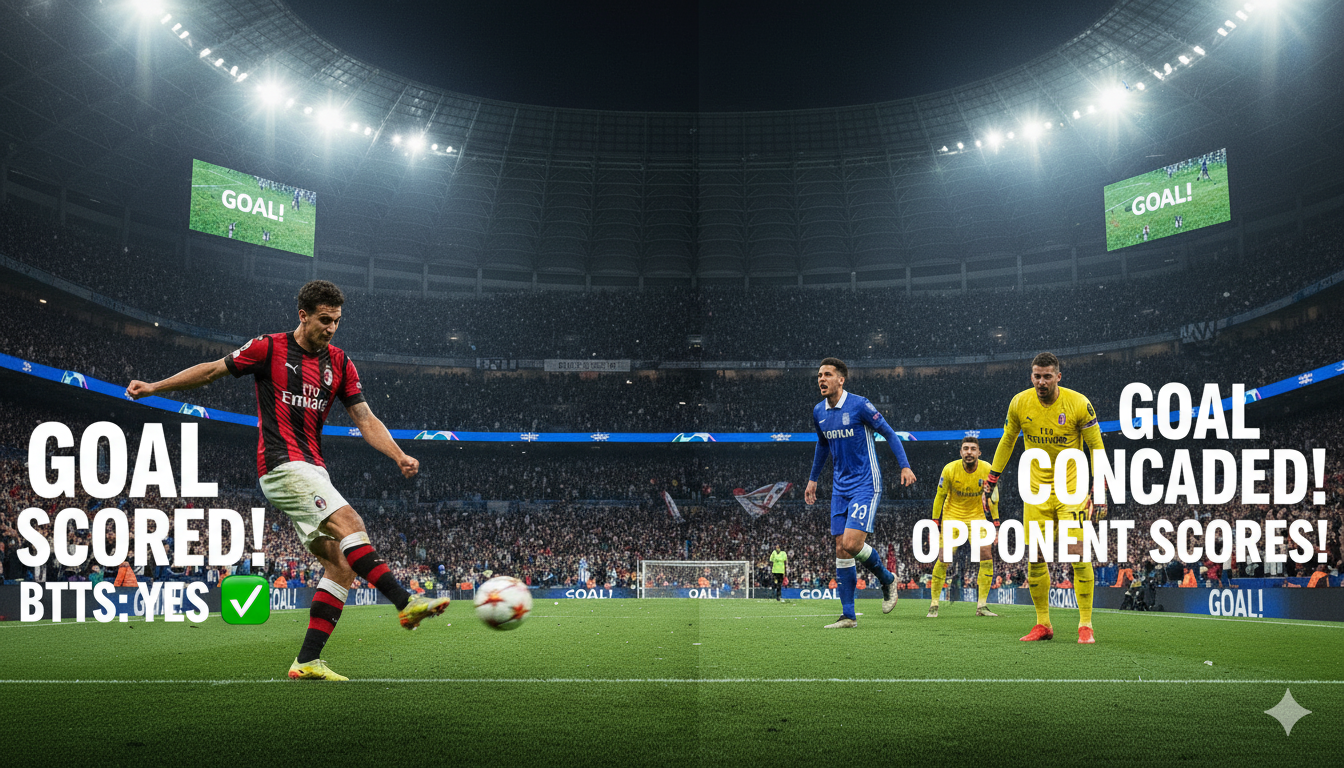Mastering the Under 2.5 Goals Betting Strategy



The world of football betting offers countless markets, but few are as consistent and appealing as the Under 2.5 Goals wager. It is a straightforward prediction: for your bet to succeed, the total number of goals scored by both teams must be two or fewer (results like 0-0, 1-0, 0-1, 1-1, 2-0, or 0-2). This market appeals to those who prefer calculated risk and matches where defensive strength holds sway over attacking flair. For matches where defenses dominate completely, our 0-0 correct score prediction guide offers deeper insight into identifying goalless outcomes.
This guide provides an authoritative approach to identifying fixtures where betting on a low goal count offers real value. We will explore both the statistical evidence and the crucial situational factors that shape a match's goal potential.
Statistical Foundations for Low-Scoring Games
A successful approach to the Under 2.5 Goals market begins with solid data analysis. Don't rely on gut feeling; use these key statistics to filter your selections:
1. Goals Per Game (GPG) Averages
Start by looking at the season-long and recent averages for both teams:
- Overall GPG: If the combined average GPG of both teams is significantly below 2.5 (e.g., 2.2 or lower), the odds naturally favor an Under 2.5 outcome.
- Home/Away Splits: Analyze the home team's GPG at home and the away team's GPG away from home. Some teams are defensively solid in front of their own fans but concede freely away, and vice-versa. Focus on where both teams trend low in their respective scenarios.
2. Defensive Solidity and Attacking Weakness
Look past goal averages and focus on defensive discipline and attacking output:
- Clean Sheet Percentage: Teams with a high percentage of matches ending in a clean sheet (for them or their opponent) are prime candidates.
- 'Failed to Score' Rate: Examine how often both teams fail to score (or score only one goal) in recent fixtures. If a team struggles to find the net, the chance of a three-goal thriller diminishes significantly.
- Head-to-Head (H2H) History: Past meetings often reveal a pattern. If the last three fixtures between the two clubs ended with a low total score, it suggests a historical tendency for a cagey affair.
Identifying Low-Goal Leagues
Goal-scoring frequency varies dramatically across different football leagues globally. Focusing your research on historically low-scoring divisions can provide a structural advantage for Under 2.5 betting.
Leagues that consistently see a high percentage of Under 2.5 results are often found in territories where team parity is high, or where a defensive style of play dominates the culture. Leagues frequently cited for their low-scoring tendency include:
- Various South American Leagues (e.g., Argentine Primera Nacional, Colombian Primera A)
- Several African Leagues (e.g., South Africa PSL, Nigerian NPFL)
- Select Lower European Divisions
Always check the current season's statistics, as goal trends can change quickly. Finding these low-scoring competitions allows you to identify more low-risk opportunities right from the start.
Situational Factors That Suppress Goals
Statistics tell you what has happened, but situational factors tell you why it might happen again today. Betting involves understanding the context of the match.
1. Match Motivation and Context
How critical is a draw?
- Crucial Mid-Table Clash: When two teams with little to play for meet late in the season, the game can become an open, high-scoring spectacle. Conversely, when two teams are fighting for survival, a draw is often considered a great result for both, leading to an extremely cautious approach.
- Cup Second Legs (Away Goals Rule): In a two-legged cup tie, if the first match was 0-0, the second leg often starts cautiously, with neither side wanting to concede an early goal. This can result in a tight, low-scoring game that only opens up late.
2. Personnel and Tactics
The starting line-ups can drastically change the expectation of goals.
- Key Absences: The absence of a team’s main striker or creative midfielder can drastically reduce their attacking output. Similarly, a top defender's suspension can make a defensive plan look less secure.
- Style of Play: If both managers are known for employing a counter-attacking strategy or a deep-lying defensive block (often referred to as 'parking the bus'), the probability of a low-scoring result rises.
3. External Influences
- Weather Conditions: Heavy rain, snow, or strong winds can slow the ball, make passing difficult, and hinder goal-scoring chances, naturally promoting a low-score outcome.
The Strategy for Finding Value in Odds
The true art of successful betting lies in finding value. This means finding situations where the bookmaker’s odds are too high for the Under 2.5 market, based on your own research.
- Calculate Your Probability: Based on all the statistical and situational factors above, estimate the percentage chance of the game finishing with Under 2.5 goals.
- Convert Odds to Probability: Take the decimal odds offered by the bookmaker and calculate their implied probability using the formula: P= 1/Odds
- Identify the Edge: If your calculated probability is higher than the bookmaker’s implied probability, you have found a value bet. For example, if your analysis suggests a 60% chance of Under 2.5, but the bookmaker's odds of 1.90 imply only a 52.6% chance, you have a solid edge worth considering.
By integrating this balanced approach—combining the objective data of GPG averages and clean sheets with the personal, subjective reading of match context and motivation—you move closer to making consistent, informed decisions in the Under 2.5 Goals market.
FAQ'S
Sports Betting Blogs

Wagering Meaning: What Does Wagering Mean in Betting and Gambling?
. 23 Sept 2025

Unpacking the Odds: What 'Over 2.5 Goals' Means for Your Football Bets
. 03 Oct 2025

Understanding the "Both Teams to Score" (BTTS) Market: A Comprehensive Guide
. 08 Oct 2025

Wager Examples in Sports and Crypto Betting
. 09 Oct 2025


